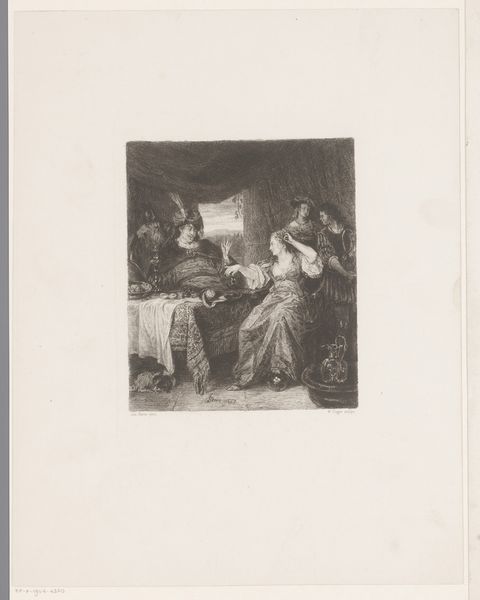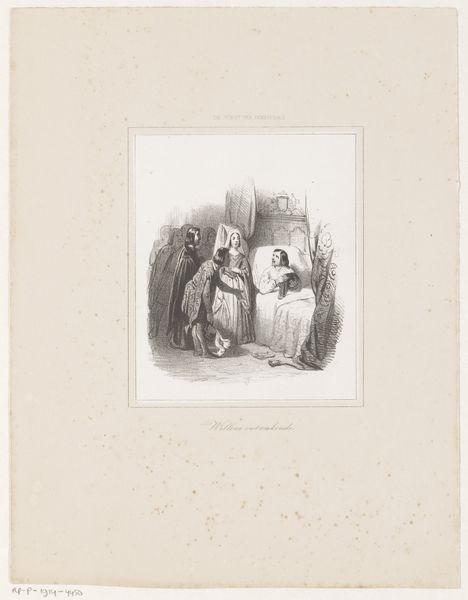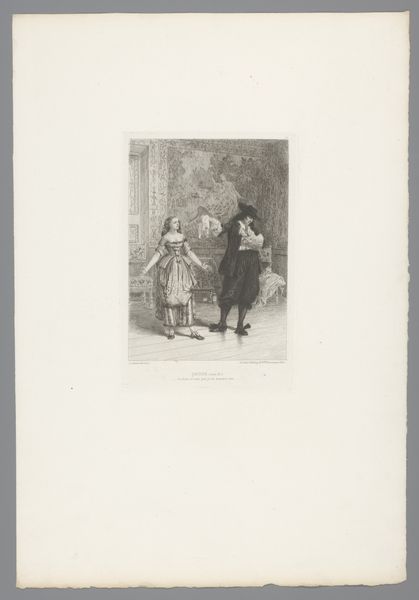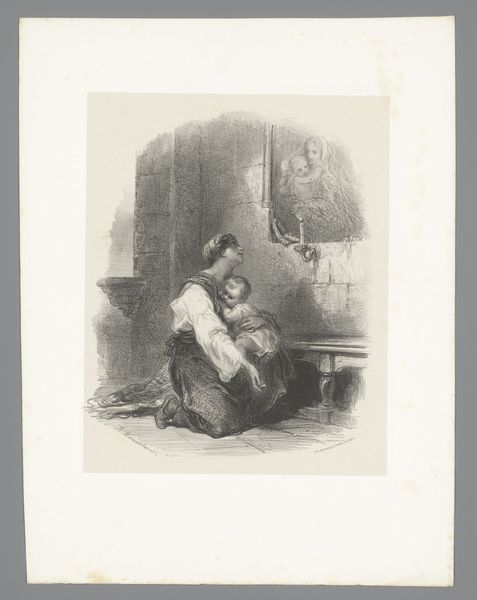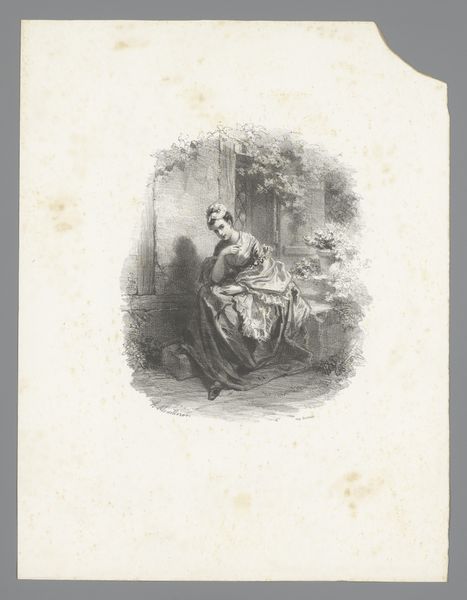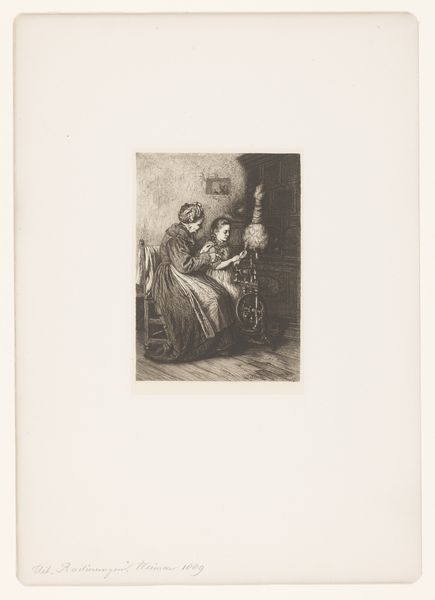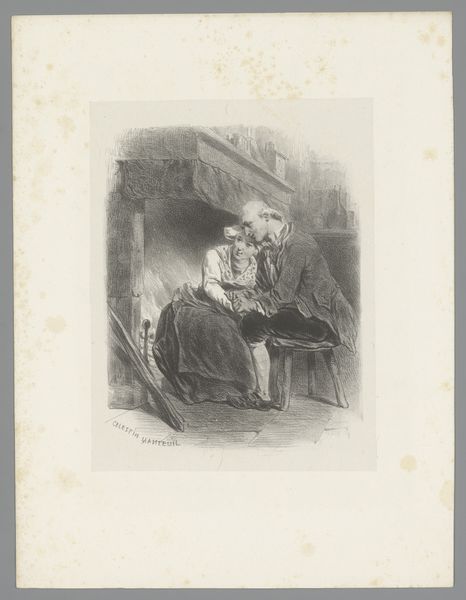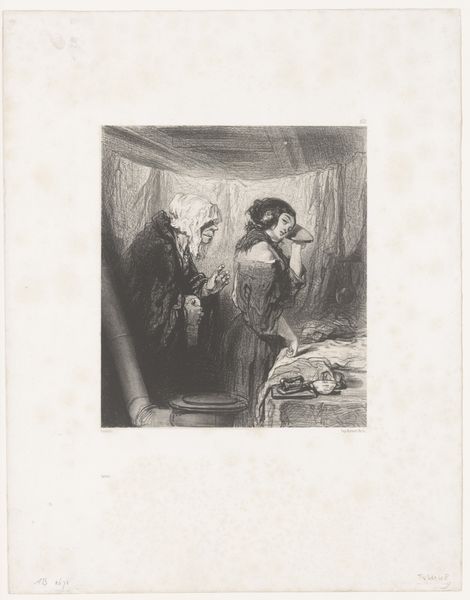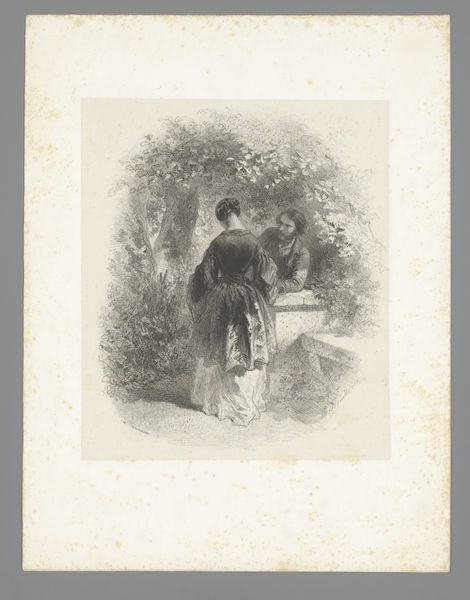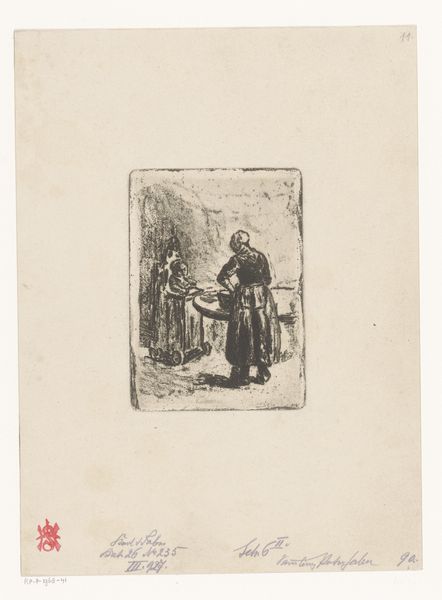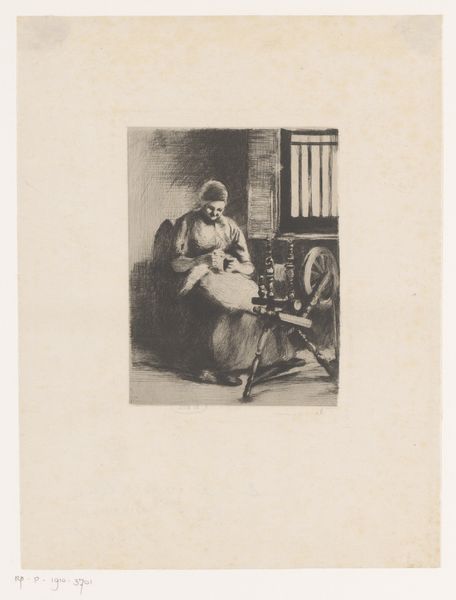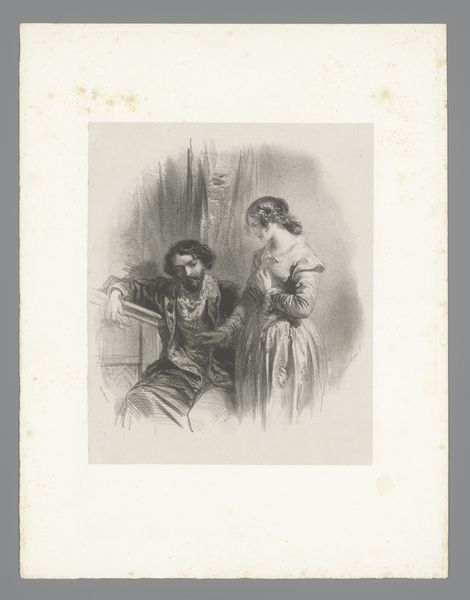
drawing, paper, ink
#
portrait
#
drawing
#
narrative-art
#
landscape
#
paper
#
ink
#
romanticism
#
chiaroscuro
#
cityscape
#
genre-painting
Dimensions: height 320 mm, width 240 mm
Copyright: Rijks Museum: Open Domain
Curator: This is "Man and Woman by Moonlight on the Waterfront," a drawing by Adolphe Mouilleron, likely created between 1836 and 1841. It's an ink drawing on paper, a study in chiaroscuro, which the Rijksmuseum holds in its collection. Editor: The immediate impact is dramatic, really. The stark contrast, the deep shadows…it speaks of a clandestine meeting, almost foreboding. You can feel the chill of the night. Curator: Indeed. Moonlit scenes in Romanticism often carry symbolic weight. The moon frequently symbolizes change, mystery, the subconscious – all intensified by the isolation of these figures. Look at the posture of the figures and how close they stand! The moon highlights their secret rendezvous. Editor: What’s striking to me is the material rendering. Note the layered strokes of ink. He clearly had a control of the ink that’s quite skillful. I’d be interested to see this piece next to examples of prints popular in the same era. I would assume he sought after that broad distribution in creating a work like this, on paper. Curator: You've hit upon a vital element of the artist's cultural milieu. It’s all a game of status. Artists in this time constantly were innovating for money, and competing with established prints made cheaply and broadly distributed. What a dance it all was. Editor: Absolutely. And within this drawing, we have such contrasting areas of labor. In that case, this seems far too artisanal, time consuming, and detail-obsessed for pure commerce. The details in the fabrics, and even individual blades of grass—it suggests both the commercial drive and artist intent. It’s a fascinating conflict. Curator: A push and pull! And think too about how this drawing plays on conventional iconographies. Moonlit landscapes were hardly new, but he is repurposing it, making it his own. The figure’s clothing is a statement of the social status here: the working class. The mystery isn't just in the landscape; it is tied to these characters and their place in the world. Editor: Yes, that balance between social observation, material precision, and dramatic license… It definitely complicates a straightforward reading of Romantic idealism. Curator: Seeing how the imagery can have psychological and emotional resonance, linked with this material history really helps you to appreciate its staying power, centuries on. Editor: Agreed. Investigating the material realities behind such pieces unveils so much about the moment of creation. It moves beyond simple aesthetics.
Comments
No comments
Be the first to comment and join the conversation on the ultimate creative platform.

